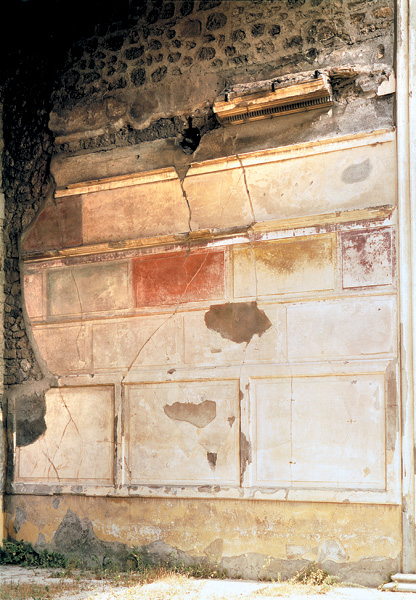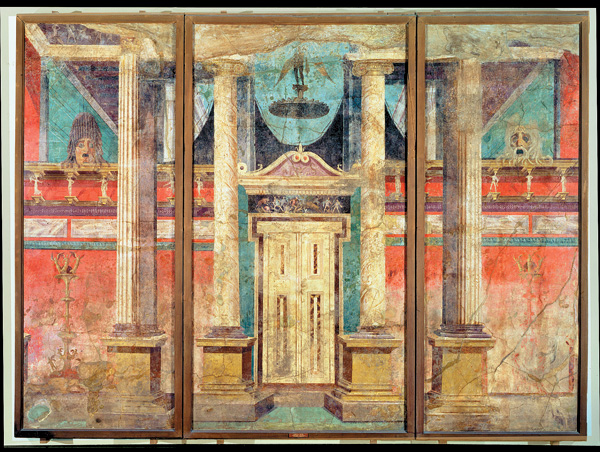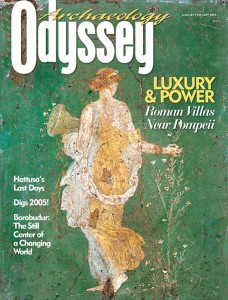Wall Paintings at Stabiae: The Four Styles
Sidebar to: Power Houses
The frescoes on the walls of buildings at Pompeii, Herculaneum and Stabiae have been divided into four chronological styles, called “Pompeian Styles” because the classifications were made at Pompeii. The four types are as follows:
First Pompeian Style, 4th century B.C. to c. 80 B.C.

Characterized by walls decorated with imitation slabs of colored marble. Sometimes the “joins” are represented in raised and molded stucco. Gradually, simple ornamental details were added, such as cornices and garlands, and sometimes figures were even represented. The origins of the first style are uncertain, but the “masonry” technique was used in Greece by the end of the fourth century B.C. and it was common in the houses of Campanian merchants on the island of Delos in the second century B.C.
Second Style, c. 80 B.C. to c. 20 B.C.

Like a stage set, simulates three-dimensional architecture by showing colonnades with broken pediments (usually a central aedicule, or shrine, with flanking wings) in a receding space of gardens and shrines.
Already a library member? Log in here.
Institution user? Log in with your IP address.

